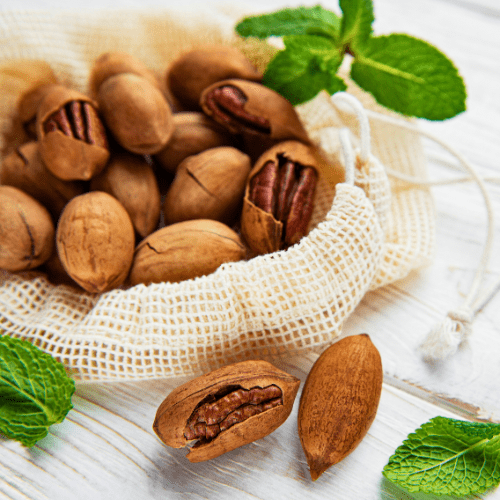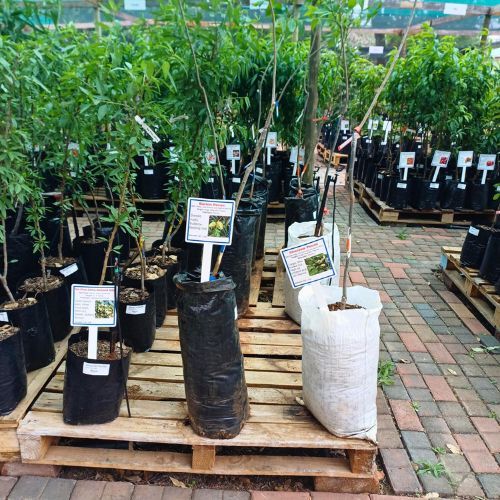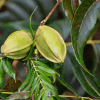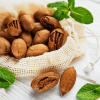Position
Barton pecan trees thrive in areas with hot summers and moderate winters. They do require 800-1000 chill hours below 7 degrees.
They require full sun exposure to produce abundant nuts. Ensure they are planted in a location that receives at least 6 to 8 hours of direct sunlight daily.
Dig a hole approximately 1m x 1m and 1m deep, ensuring the tree is planted at the same depth as it was in the nursery black bag.
Size
Pecan nut trees can grow to a height of between 20 and 40m. Ensure they are planted at least 10 metres apart and away from structures and power lines.
Soil type
Pecan trees prefer well-drained, deep, fertile soil. They can tolerate a wide range of soil types but do best in loamy soils with a pH of 6.0 to 7.0.
Soil should be rich in organic matter. Adding a bag of acid compost and well-rotted manure before planting can improve soil structure and fertility.
Mulching
Apply organic mulch to your pecan tree year-round.
Use from 2 to 5 centimetres of pine bark mulch to protect the roots from UV damage and drying out. It retains moisture and maintains an optimal pH. Do not let the mulch touch the plant stem, as it may cause infection or rot.
Watering
Young Barton pecan trees need regular watering, especially during dry periods, to help them establish a strong root system. Water them deeply and thoroughly once a week for the first 2 years. Drip irrigation or deep watering promotes deep root growth.
Once established, pecan trees are somewhat drought-tolerant but will still benefit from supplemental watering during prolonged dry spells. For mature trees, soil moisture determines the yield, size, and fullness of nuts and the amount of new growth. Water them often enough to keep the soil evenly moist from when the buds swell until harvest.
Fertilising:
Pecan trees, including Barton, are heavy feeders and require regular fertilization to support their growth and nut production. Apply our slow-release nitrogen-rich all plant fertiliser. Apply one teaspoon every 4-5 months. The roots will absorb what they require.
Pruning:
Prune your pecan nut trees annually during the dormant season (winter) to remove dead, damaged, or crossing branches. This helps improve air circulation and light penetration within the canopy, reducing disease and improving nut production.
Pests and Diseases
Aphids, citrus psylla, red scale, citrus greening. Spraying regularly with Agricultural Neem Oil or Effective Microorganisms (EM Control) will assist in either prevention or post-facto. If you already have aphids or mites, wash the tree with a strong hose, then, when dry, spray with Neem oil or EM Control.
Practice good garden hygiene (remove fallen fruit and leaves).
Watch for root rot (if overwatered) and fungal infections during wet periods.












